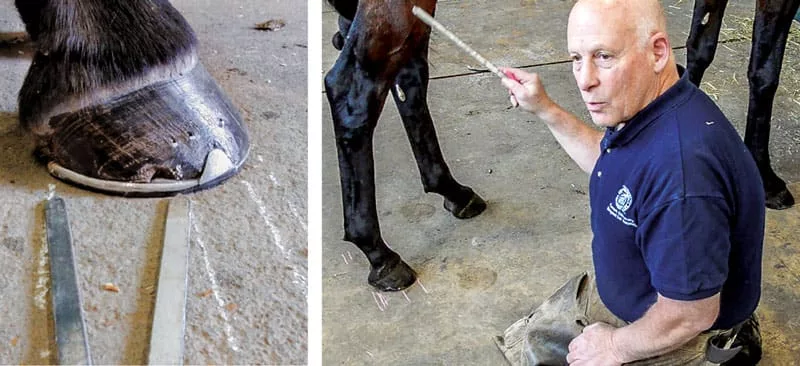American Farriers Journal
American Farriers Journal is the “hands-on” magazine for professional farriers, equine veterinarians and horse care product and service buyers.

Cornell University farrier Steve Kraus finds the golden ratio helps in checking one’s footcare work (left). A horse with a locking stifle issue allowed him to demonstrate this method (right).
How do you assess the horse before you trim it? How are you evaluating your work while with the horse? Are you spending time with each horse to do this? There are many different ways to assess the horse and check our work with it. The key is to dedicate the time to do this and to have a standard.
There are different ways that I look at the horse and my work. I teach my students to develop their eyes. One analysis tool that I have used is the golden ratio. Luca Pacioli called it in 1509, “de divinia proportione” — the divine proportion. Ancient Greek mathematicians first studied the ratio (1:1.618) because of its frequency in geometry. The first known written definition came from Euclid’s Elements: “A straight line is said to have been cut in extreme and mean ratio when, as the whole line is to the greater segment, so is the greater to the lesser.” And this concept isn’t new for farriers in analysis of work. In 2004, New Mexico farrier Craig Trnka discussed this concept in Professional Farrier.
I commonly draw the lines on the floor as a method to…